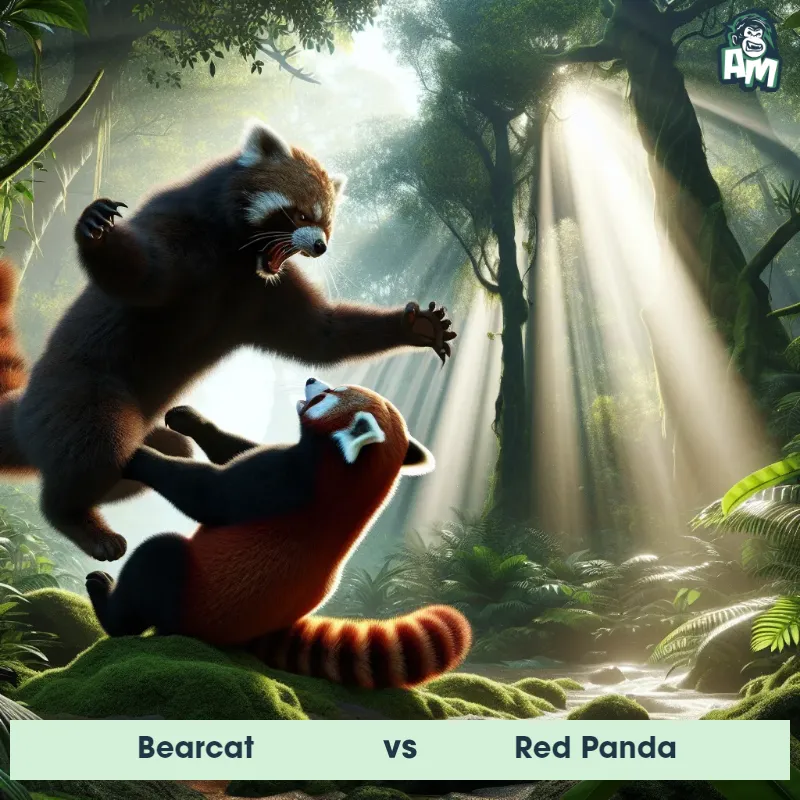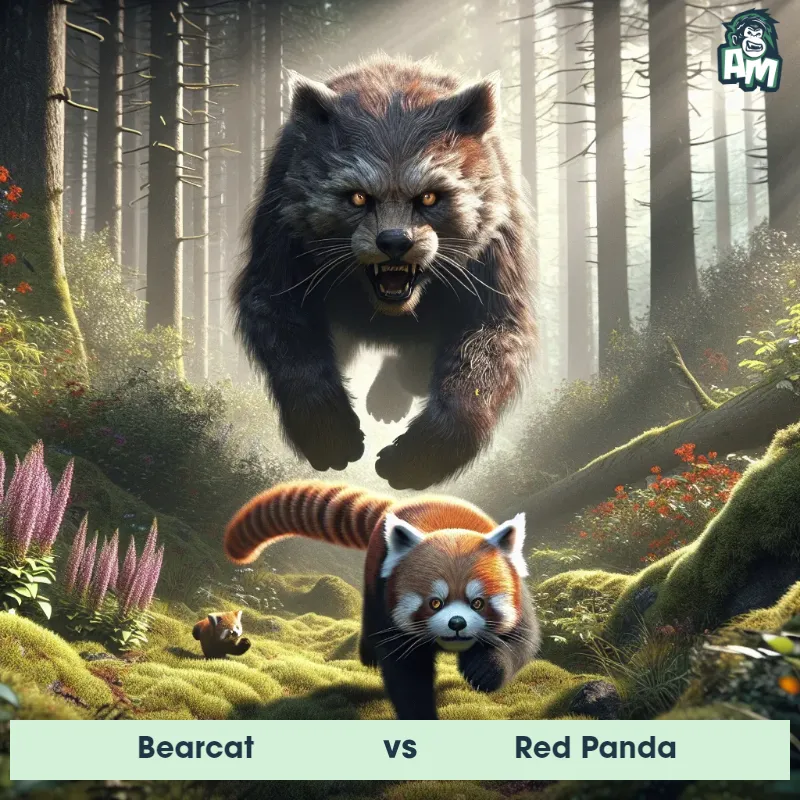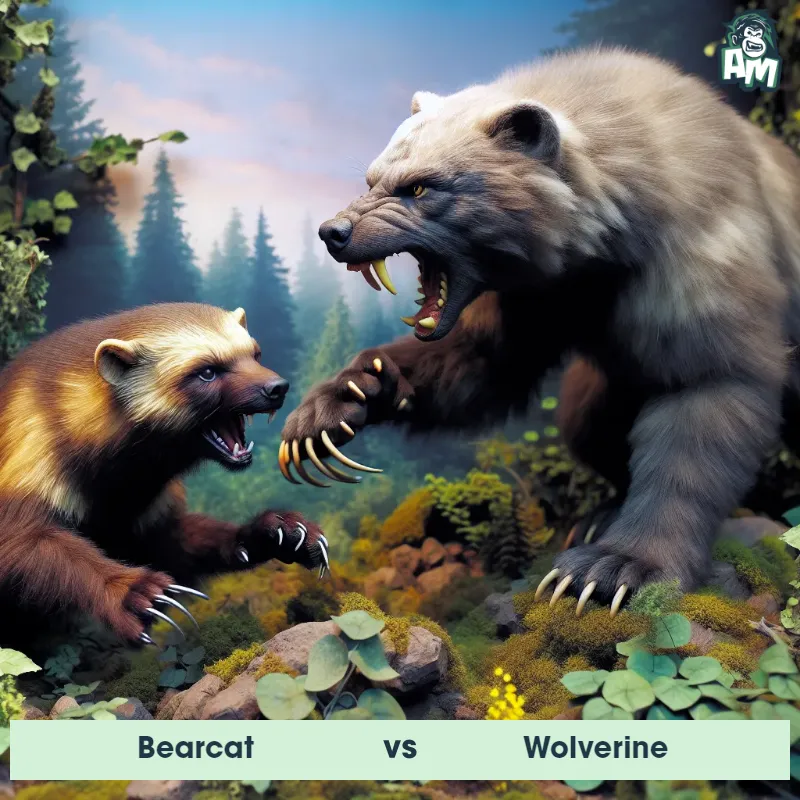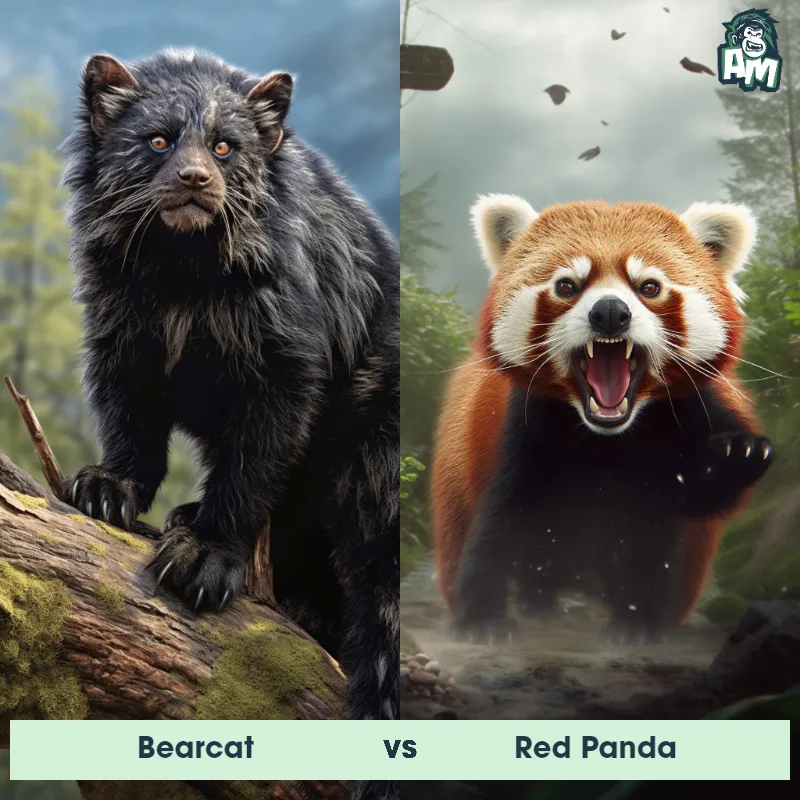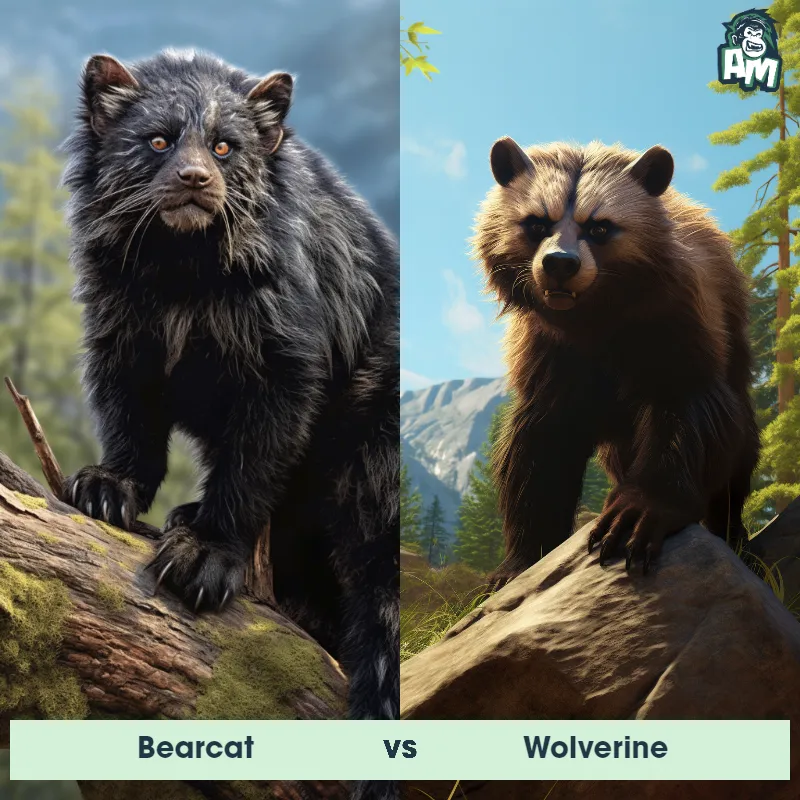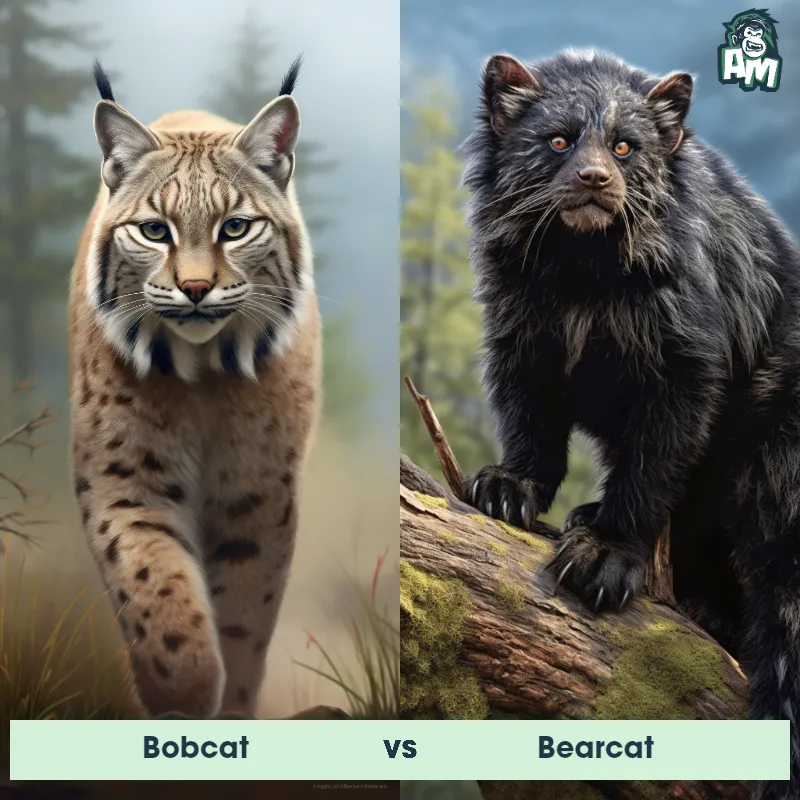The Bearcat
The Bearcat, also known as the Binturong, is a fascinating mammal that can be found in the rainforests of Southeast Asia. It is a large and robust creature, measuring about 2 to 3 feet in length with a tail that is almost as long as its body. The Bearcat has a unique appearance with long, shaggy black or dark brown fur, a stout body, and a cat-like face. One distinctive trait of the Bearcat is its prehensile tail, which enables it to grasp branches and aid in climbing trees. It is a solitary animal that is primarily nocturnal and has a keen sense of smell, which it uses to locate prey and communicate with other Bearcats through scent markings.
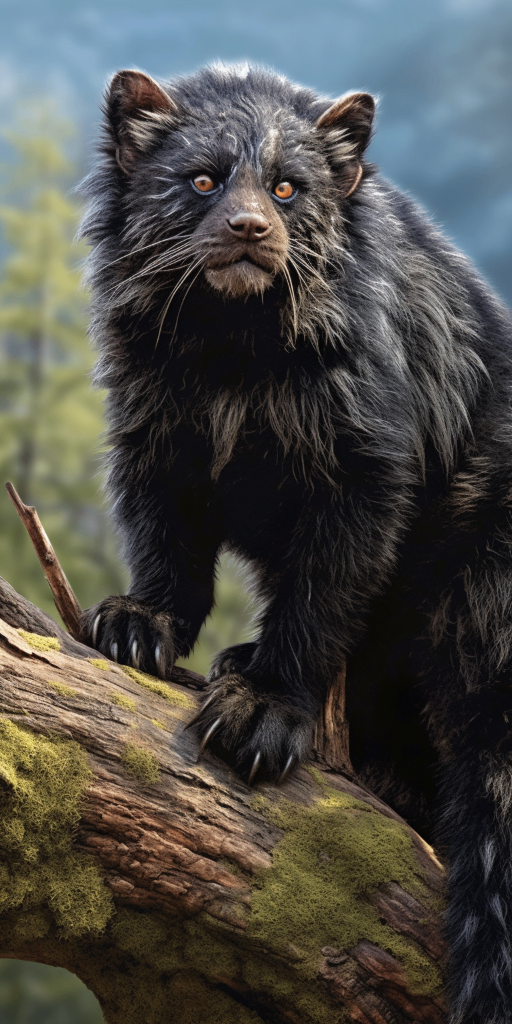
| Bearcat | |
|---|---|
| Size | 2.5-3 ft (76-91 cm) in length |
| Weight | 25-50 lbs (11-23 kg) |
| Speed | Speed: 50 mph (80.47 km/hr) |
| Key Strength | Powerful jaws and sharp claws |
| Biggest Weakness | Slow movement on the ground |
| Scientific Name | Arctictis binturong |
| Family | Viverridae |
| Habitat | Arboreal |
| Geography | Southeast Asia |
| Diet | Omnivorous |
| Lifespan | 20 years - 25 years |

The Bearcat
The Bearcat, also known as the Binturong, is a fascinating mammal that can be found in the rainforests of Southeast Asia. It is a large and robust creature, measuring about 2 to 3 feet in length with a tail that is almost as long as its body. The Bearcat has a unique appearance with long, shaggy black or dark brown fur, a stout body, and a cat-like face. One distinctive trait of the Bearcat is its prehensile tail, which enables it to grasp branches and aid in climbing trees. It is a solitary animal that is primarily nocturnal and has a keen sense of smell, which it uses to locate prey and communicate with other Bearcats through scent markings.
Fun Fact: Despite its name, the Bearcat is neither a bear nor a cat. It is actually a member of the Viverridae family, which includes civets and genets.
| Bearcat | |
|---|---|
| Size | 2.5-3 ft (76-91 cm) in length |
| Weight | 25-50 lbs (11-23 kg) |
| Speed | Speed: 50 mph (80.47 km/hr) |
| Key Strength | Powerful jaws and sharp claws |
| Biggest Weakness | Slow movement on the ground |
| Scientific Name | Arctictis binturong |
| Family | Viverridae |
| Habitat | Arboreal |
| Geography | Southeast Asia |
| Diet | Omnivorous |
| Lifespan | 20 years - 25 years |
Match Highlights
Bearcat Matchups
We use AI to simulate matchups between the Bearcat and other animals. Our simulation considers size, strength, and natural predatory behaviors to determine the most likely outcome.

Can't find the Matchup you want?
Create Your Own MatchupBearcat: Diet, Predators, Aggression, and Defensive Behaviors
What do Bearcats eat?
Bearcats are omnivores, meaning they eat a variety of foods. Their diet typically consists of fruits, insects, small mammals, birds, and eggs. They are also known to eat carrion and occasionally feed on plant materials.
Do Bearcats have any predators?
Adult Bearcats are apex predators in their habitats and do not have any natural predators. However, young Bearcats may be vulnerable to attacks from larger predators such as leopards, pythons, and birds of prey.
Are Bearcats aggressive?
Bearcats are generally shy and nocturnal animals, preferring to avoid confrontations with other animals. They are not known to be aggressive towards humans unless they feel threatened or cornered.
Do Bearcats fight?
Bearcats will become aggressive and may engage in physical combat if they feel threatened or if they are defending their territory or young. They have sharp claws and strong jaws that they can use in fights against other animals.
How do Bearcats defend themselves?
Bearcats have several defense mechanisms to protect themselves from predators or threats. They can emit a strong, musky odor from their scent glands to deter potential threats. They also have sharp claws and strong jaws that they can use to defend themselves in physical confrontations.
What is the biggest weakness of a Bearcat in a fight?
Despite their sharp claws and strong jaws, Bearcats are relatively small in size compared to some of their predators. Their biggest weakness in a fight would be their vulnerability to larger predators that may be able to overpower them with sheer size and strength.
Fun Fact: The Bearcat has an interesting adaptation to its diet. It has a specialized digestive system that allows it to consume a variety of food, including fruits, insects, small mammals, and even carrion.
Fun Fact: The Bearcat possesses a peculiar odor, often described as a mixture of popcorn and burnt sugar. This scent is produced by scent glands located near its anus and is used for marking territory and attracting mates.



